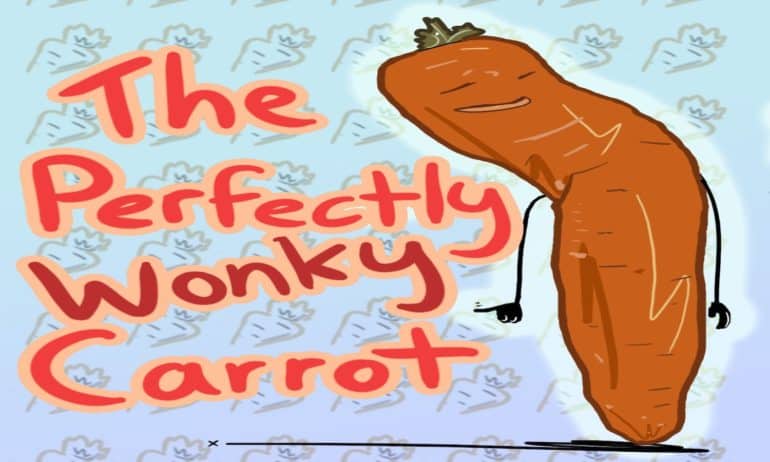Chris Newman is an author and illustrator supporting the fight to reduce food waste with his new children’s picture book, The Perfectly Wonky Carrot. The book is aimed at children and their parents to raise awareness about the food industry’s unsustainable cosmetic standards given to growing and selling fresh produce. It follows the story of Tap Carrotsworth, a crooked-looking carrot that proves that wonky fruits and vegetables are still nutrient-rich, healthy, and delicious. The story promotes a positive body image for children and less wasteful consumption practices. Five percent of the book’s sales will be going to food waste charities in the United Kingdom.
Food Tank had the opportunity to speak with Chris Newman about the release of The Perfectly Wonky Carrot and the importance of educating the next generation on food waste issues.
Food Tank (FT): What inspired you to write The Perfectly Wonky Carrot?
Chris Newman (CN): Halfway through 2016 I watched ‘Hugh’s War on Waste,’ a three-part BBC series that looks into the waste generated by supermarkets and the fast food Industry. The first episode is about the food we eat, and how we, the purchaser, and supermarkets, the supplier, waste millions of tonnes of food each year.
One scene featuring some parsnip farmers truly highlighted the strict cosmetic standards imposed on farmers by supermarkets—who only want perfectly shaped and sized produce. Everything else that’s wonky, or cosmetically imperfect, gets rejected, costing farmers vital resources and money. The scene ends with a dump truck pouring out a week’s worth of rejected turnips, a pile weighing around 20 tonnes and over 10 feet high. Seeing the farmer’s plight and the amount of perfectly edible food unnecessarily wasted motivated me to write a book celebrating wonky fruit and vegetables.
FT: Information today is presented to children through so many mediums and devices, why did you choose to present this topic through a book?
CN: I’ve always worked visually—my degree was in creative advertising, and before that, I studied photography and art. I chose a picture book as I believed it would express the story best. The combination of word and illustration is a powerful one; visually rich illustrations bring to life the words that accompany them. There’s more emotion and understanding to a narrative in this way.
FT: You focus on the food industry’s standard of perfection—what messages do you hope to convey to both children and their parents about cosmetic food standards?
CN: That we shouldn’t avoid purchasing or eating food because it looks a certain way. These perfect standards are unrealistic and unnecessary. Food naturally grows in all weird shapes and sizes, but the taste and contents are all the same. They’re more interesting and amusing to look at too!
FT: How can children and adults take these messages from The Perfectly Wonky Carrot and put them into practice?
CN: By going to shops and picking up wonky, or imperfect, fruits and vegetables from the retailers. There is an increasing amount of wonky options available now. The reduced section has plenty of treats too. Ask in store if you can’t see any. Children are naturally curious, so showing and allowing them to hold the unfamiliar wonky produce will surely fire up their active imaginations.
FT: Why is child education and outreach an important element in the fight against food waste?
CN: Children are the next generation of people who will be responsible for how well we look after our environment and natural resources. Learning these crucial lessons early on is a vital way of cementing them into lasting practices for life. By teaching them more sustainable attitudes and actions towards how they buy, eat, or grow food, it can lead to lasting change in the way our society manages its resources.











